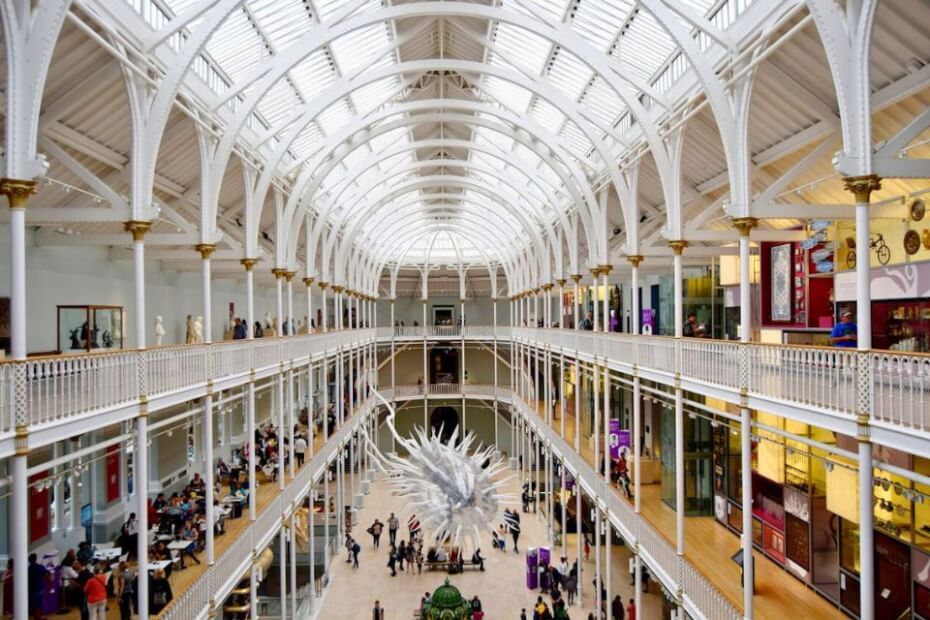
The Association of Leading Visitor Attractions (ALVA) has unveiled the most visited tourist attractions in the United Kingdom (UK) in 2023.
The British Museum took the top spot, with over 5.8 million visitors in 2023. This shows a 42 percent increase from the previous year. It last topped the list in 2019.
ALVA said its popularity was mainly driven by the museum’s “China’s Hidden Century” exhibit, which ran from May to October 2023.
The Natural History Museum, in west London, came in second with 5.7 million visitors.
Tate Modern, home to the UK’s national collection of international modern and contemporary art, placed fourth with 4.7 million visits last year.
Another art center, Southbank Centre, followed in fifth place with a footfall figure of 3.1 million.
Five more attractions with the highest number of visits in the UK are London-based.
These are the Victoria and Albert Museum, the National Gallery, the Science Museum, the Tower of London, and Somerset House.
ALVA’s members include the UK’s leading museums, galleries, historic sites, and leisure attractions, totaling over 2,200 locations.
Tourist attractions in the capital dominate this year’s ranking for most visited locations, reported The Independent.
Top tourist UK attractions outside London
The Crown Estate and the National Museum of Scotland are the only tourist attractions outside London to feature in the UK’s top ten most visited spots in 2023.
Contrary to popular belief, the Crown Estate, which includes Windsor Castle and Windsor Great Park, is in Berkshire. It lies just west of London.
It ranked first in 2021 and 2023 but slid to third with a three-percent decline in tourist numbers. Its total number of visits in 2023 was 5.5 million.
The Crown Estate was also ranked the top outdoor attraction in the UK for 2023.

On the other hand, the National Museum of Scotland in Edinburgh had 2.2 million visitors.
Edinburgh Castle and the National Gallery Scotland were also popular tourist magnets in Scotland’s capital. They had 1.9 and 1.8 million visitors, respectively.
Other visitor hot spots outside of London include the RHS Garden, RHS Garden Wisley in Woking, Stonehenge in Salisbury, and the Roman Baths and Pump Room in Bath.
Completing the top ten tourist attractions outside England’s capital are the Kelvingrove Art Gallery and Museum and Riverside Museum. They are both located in Glasgow, Scotland.
Additionally, Titanic Belfast had the most visits in Northern Ireland, with 800,000 people coming to the attraction.
St Fagans National Museum of History in Cardiff welcomed 600,000 visits, the highest in Wales.
Visitor numbers almost recovered from the pandemic
ALVA reported a 19% increase in visitors in 2023, with 146.6 million people compared to 2022.
However, visitor volume is still 11 percent down compared to 2019 pre-pandemic, with 163.9 million visits.
ALVA director Bernard Donoghue said the slow recovery may be due to economic changes and the cost of living.
“People are being much more tactical, sensibly, about how they spend their leisure pounds,” he told Simon Calder’s Independent Travel Podcast.
Still, Donoghue said ALVA members are “delighted” people are “still prioritizing spending special time with special people at special places.”
He shared the same forecast on visitor numbers and spending on inbound tourism as VisitBritain.
The UK’s national tourism agency predicts a complete recovery to 2019 in both visits and spending by early 2025.
Lost tourism opportunities in the UK
The ALVA director said tax relief for museums, theaters, and galleries was “a very welcome announcement in the recent budget.”
However, he did not hide his discontent with some of the UK government’s recent decisions that affected the tourism economy.
One is requiring passports and prohibiting European Union (EU) citizens from traveling to the UK on their national identity (ID) cards.
“We thought that was a disastrous act of economic self-harm,” Donoghue said.
Many EU citizens do not have passports since they travel within the Schengen Area with only their ID cards.
This resulted in a loss of more than 200 million potential UK visitors who only have ID cards.
According to the government, the UK would lose 890,000 visits from EU citizens annually, resulting in a financial loss of £590m per year.
Another is abolishing tax-free shopping, which led to a “significant decrease” in overseas tourists’ spending in attraction gift shops.
Donoghue said the UK is “missing out on expensive items being bought by visitors from around the world, particularly from America, the Middle East and the Far East.”
He said that without the tax-free shopping rule, visitors would cut their UK holiday short and shop in Paris, Milan, Madrid, and Rome.

